
Home - Search - Browse - Alphabetic Index: 0- 1- 2- 3- 4- 5- 6- 7- 8- 9
A- B- C- D- E- F- G- H- I- J- K- L- M- N- O- P- Q- R- S- T- U- V- W- X- Y- Z
Mars M-71
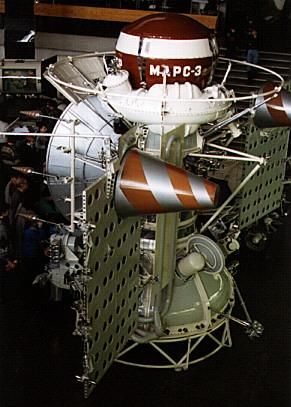 Mars 3 spacecraft Mars 3 spacecraft Aeroshell is removed to show lander payload. Credit: © Mark Wade |
AKA: M-71. Status: Operational 1971. First Launch: 1971-05-10. Last Launch: 1971-05-28. Number: 3 . Gross mass: 4,647 kg (10,244 lb).
The primary scientific objectives were to image the Martian surface and clouds, determine the temperature on Mars, study the topography, composition and physical properties of the surface, measure properties of the atmosphere, and monitor the solar wind and the interplanetary and Martian magnetic fields.
Spacecraft and Subsystems
The attached orbiter/bus and descent module had a mass of approximately 4650 kg at launch (including fuel) and was 4.1 meters high, 5.9 meters across the two solar panel wings, and had a base diameter of 2 meters. The mass of the orbiter/bus was about 3440 kg fully fueled, and the fueled mass of the descent/lander module was about 1210 kg. The propulsion system was situated at the bottom of the cylindrical spacecraft body and the descent module was mounted on top. The two solar arrays extended from the sides and a 2.5 meter diameter parabolic high-gain communications antenna was also mounted on the side. The instruments and navigation system were located around the bottom of the craft, and the central part of the main body was composed primarily of the fuel tank. Antennae for communications with the lander were affixed to the solar panels. Three low power directional antennae extended from the main body near the parabolic antenna.
For scientific instrumentation (most mounted in a hermetically sealed compartment) the orbital bus carried: a 1 kg infrared radiometer with an 8- to 40-micron range to determine the temperature of the Martian surface to -100 degrees C; a photometer to conduct spectral analysis by absorption of atmospheric water vapor concentrations in the 1.38-micron line; an infrared photometer; an ultraviolet photometer to detect atomic hydrogen, oxygen, and argon; a visible range photometer covering six narrow ranges between .37 and .70 microns; an instrument to determine the reflectivity of the surface and atmosphere in the visible (0.3 to 0.6 microns) and the radio-reflectivity of the surface in the 3.4 micron range and the dielectric permeability to give a temperature estimate to a depth of 35 to 50 cm below the surface; carbon dioxide gas absorption strips (2.06 microns) to determine the optical thickness of the atmosphere and hence the surface relief; and two cameras, each with one 4 degree narrow angle lens and one 52 mm focal length wide angle lens, on the same axis and having several light filters, including red, green, blue, and UV. The imaging system returned 1000 x 1000 element scanned pictures by facsimile after development in an automatic onboard laboratory. Radio occultation experiments were also performed when communications transmissions passed through the Martian atmosphere in which the refraction of the signals gave information on the atmospheric structure. During the flight to Mars, measurements were made of galactic cosmic rays and solar corpuscular radiation. Eight separate spectrometers were on board to determine the speed, temperature, and composition of the solar wind in the range 30 to 10,000 eV. A three axis magnetometer to measure the interplanetary and Martian fields was mounted on a boom extending from one of the solar panels.
The descent module was released about 4.5 hours before reaching Mars. Through aerodynamic braking, parachutes, and retro-rockets, the lander achieved a soft landing and was to return photographs of the surface. Meanwhile, the orbiter engine performed a burn to put the spacecraft bus into a long 11-day period orbit about Mars. However all Soviet Mars landers failed, showing the wisdom of the US Viking approach where the entire spacecraft was put into Mars orbit, and reconnaissance conducted to determine the best landing site and weather conditions before releasing the lander.
More at: Mars M-71.
Family: Mars lander. Country: Russia. Engines: KTDU-425. Launch Vehicles: Mars tactical rocket, Proton, Proton-K/D. Projects: Mars. Launch Sites: Baikonur, Baikonur LC81/23, Baikonur LC81/24. Agency: MOM, Lavochkin bureau. Bibliography: 118, 2, 274, 296, 376, 6, 67, 12804.
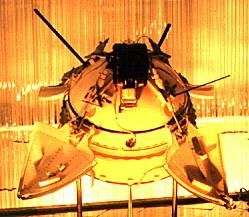 | Mars lander Credit: © Mark Wade |
 | Mars 2 / M-71 Credit: NASA |
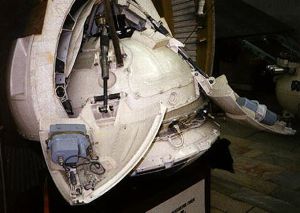 | Mars 2 / 3 lander Mars 2 / 3 descent vehicle, cross section through heat shield, showing petals deployed. Credit: Andy Salmon |
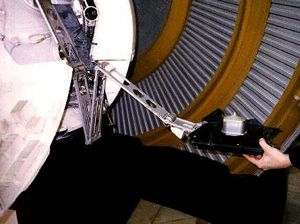 | Mars 2 / 3 lander Deployable instrument from Mars-2/3 Credit: Andy Salmon |
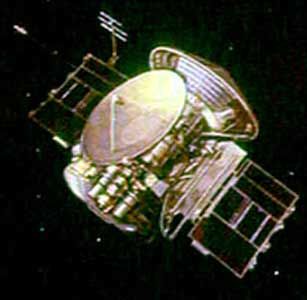 | Mars 6 Credit: Manufacturer Image |
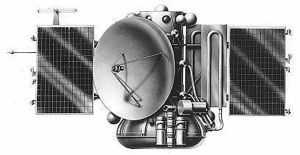 | M-71 |
 | Mars 4/5 |
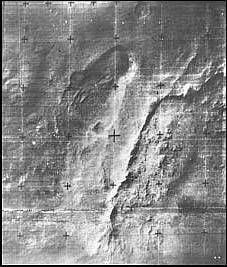 | Mars 5 image Surface of the planet as imaged from Mars 5. |
1971 May 10 - . 16:58 GMT - . Launch Site: Baikonur. Launch Complex: Baikonur LC81/23. LV Family: Proton. Launch Vehicle: Proton-K/D. FAILURE: No Block D ignition due wrong timer setting.. Failed Stage: U.
- Cosmos 419 - .
Payload: M-71 s/n 170. Mass: 4,650 kg (10,250 lb). Nation: Russia.
Agency: MOM.
Program: Mars.
Class: Mars.
Type: Mars probe. Spacecraft Bus: 4MV.
Spacecraft: Mars M-71.
Decay Date: 1971-05-12 . USAF Sat Cat: 5221 . COSPAR: 1971-042A. Apogee: 187 km (116 mi). Perigee: 134 km (83 mi). Inclination: 51.50 deg. Period: 87.70 min.
Mars probe intended to enter Martian orbit and comprehensively photograph Mars. Rocket block failed to reignite in Earth Orbit. It is widely believed this spacecraft was launched with the primary purpose of overtaking Mariner 8, which had been launched (unsuccessfully, as it turned out) two days earlier, and becoming the first Mars orbiter. The Proton booster successfully put the spacecraft into low (174 km x 159 km) Earth parking orbit with an inclination of 51.4 degrees, but the Block D stage 4 failed to function due to a bad ignition timer setting (the timer, which was supposed to start ignition 1.5 hours after orbit was erroneously set for 1.5 years.) The orbit decayed and the spacecraft re-entered Earth's atmosphere 2 days later on 12 May 1971. The mission was designated Cosmos 419.
1971 May 19 - . 16:22 GMT - . Launch Site: Baikonur. Launch Complex: Baikonur LC81/24. LV Family: Proton. Launch Vehicle: Proton-K/D.
- Mars 2 - .
Payload: M-71 s/n 171. Mass: 4,650 kg (10,250 lb). Nation: Russia.
Agency: MOM.
Program: Mars.
Class: Mars.
Type: Mars probe. Spacecraft Bus: 4MV.
Spacecraft: Mars M-71.
USAF Sat Cat: 5234 . COSPAR: 1971-045A. Apogee: 25,000 km (15,000 mi). Perigee: 1,380 km (850 mi). Inclination: 48.90 deg. Period: 1,080.00 min.
Mars probe intended to conduct of a series of scientific investigations of the planet Mars and the space around it. Parameters are for Mars orbit. Mid-course corrections were made on 17 June and 20 November. Mars 2 released the descent module (1971-045D) 4.5 hours before reaching Mars on 27 November 1971. The descent system malfunctioned and the lander crashed at 45 deg S, 302 deg W, delivering the Soviet Union coat of arms to the surface. Meanwhile, the orbiter engine performed a burn to put the spacecraft into a 1380 x 24,940 km, 18 hour orbit about Mars with an inclination of 48.9 degrees. Scientific instruments were generally turned on for about 30 minutes near periapsis. Data was sent back for many months. It was announced that Mars 2 and 3 had completed their missions by 22 August 1972. On-orbit dry mass: 2265 kg. Had the lander survived, data would have been relayed to the earth via the orbiter.
1971 May 28 - . 15:26 GMT - . Launch Site: Baikonur. Launch Complex: Baikonur LC81/23. LV Family: Proton. Launch Vehicle: Proton-K/D.
- Mars 3 - .
Payload: M-71 s/n 172. Mass: 4,643 kg (10,236 lb). Nation: Russia.
Agency: MOM.
Program: Mars.
Class: Mars.
Type: Mars probe. Spacecraft Bus: 4MV.
Spacecraft: Mars M-71.
USAF Sat Cat: 5252 . COSPAR: 1971-049A. Apogee: 214,500 km (133,200 mi). Perigee: 1,528 km (949 mi). Inclination: 60.00 deg. Period: 18,243.00 min.
Mars probe intended to conduct of a series of scientific investigations of the planet Mars and the space around it. Parameters are for Mars orbit. The Mars 3 orbiter also carried a French-built experiment which was not carried on Mars 2. Called Spectrum 1, the instrument measured solar radiation at metric wavelengths in conjunction with Earth-based receivers to study the cause of solar outbursts. The Spectrum 1 antenna was mounted on one of the solar panels. A mid-course correction was made on 8 June. The descent module (COSPAR 1971-049F) was released at 09:14 GMT on 2 December 1971 about 4.5 hours before reaching Mars. Through aerodynamic braking, parachutes, and retro-rockets, the lander achieved a soft landing at 45 S, 158 W and began operations. However, after 20 sec the instruments stopped working for unknown reasons. Meanwhile, the orbiter engine performed a burn to put the spacecraft into a long 11-day period orbit about Mars with an inclination thought to be similar to that of Mars 2 (48.9 degrees). Data was sent back for many months. It was announced that Mars 2 and 3 had completed their missions by 22 August 1972.
Back to top of page
Home - Search - Browse - Alphabetic Index: 0- 1- 2- 3- 4- 5- 6- 7- 8- 9
A- B- C- D- E- F- G- H- I- J- K- L- M- N- O- P- Q- R- S- T- U- V- W- X- Y- Z
© 1997-2019 Mark Wade - Contact
© / Conditions for Use